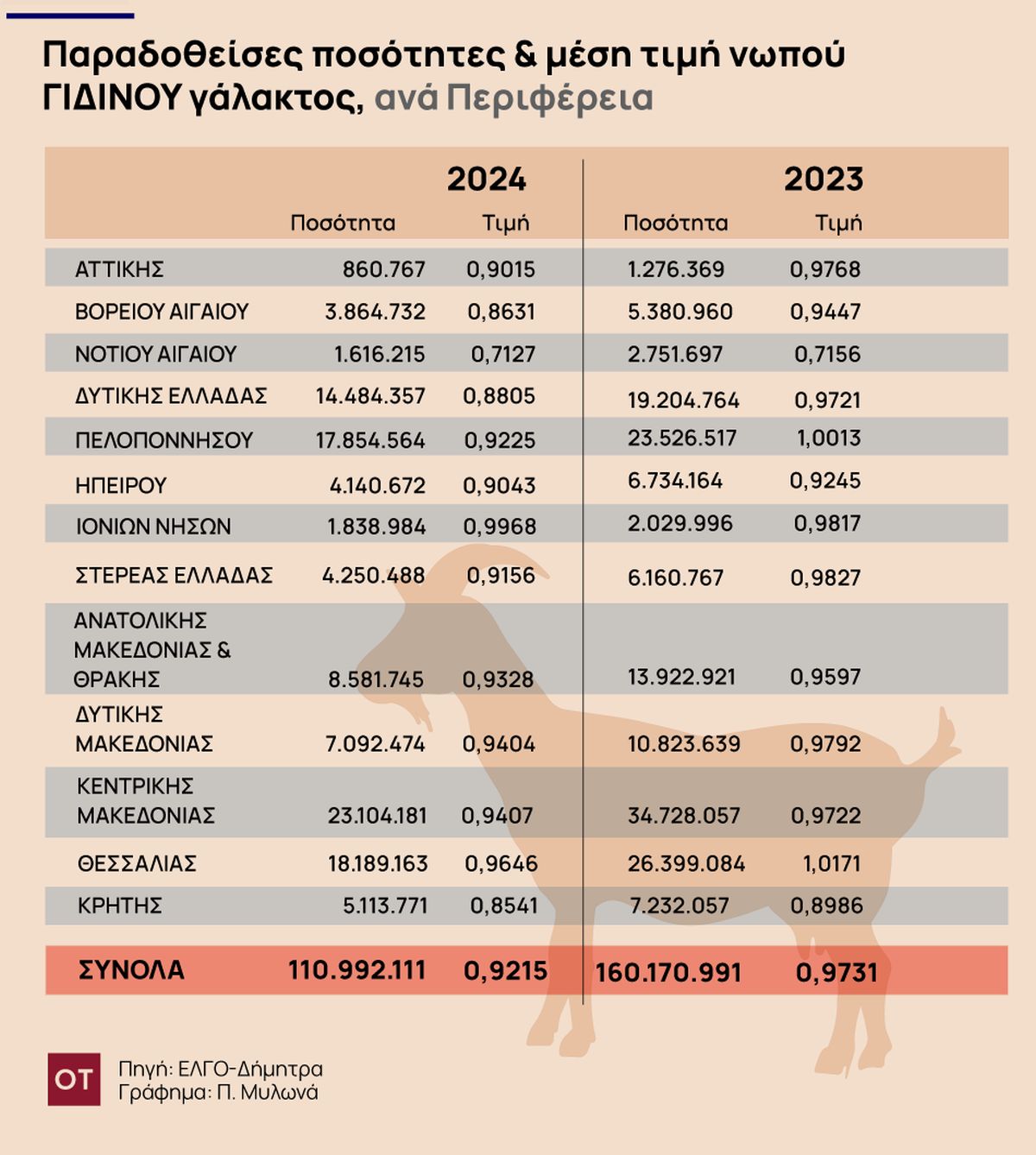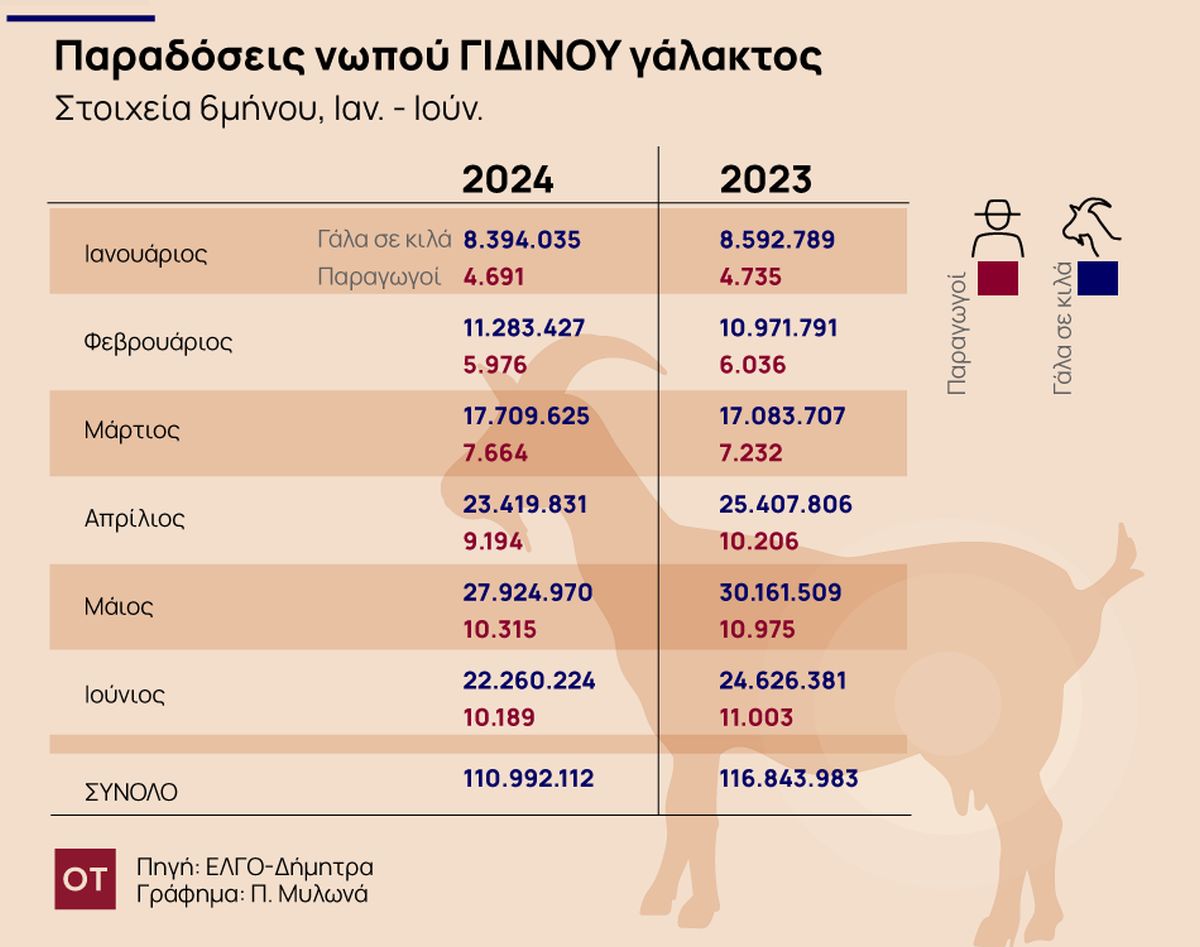Cattle breeders and cheesemakers are throwing themselves into the negotiation battle in the near future to shape the price of goat and sheep milk and to close the contracts in time for the new dairy year. A year, which has been marked by the zoonoses of sheep and goat plague and smallpox, while the signs of the loss of part of the livestock from Daniel’s catastrophic damage in Thessaly are still evident.
Traditionally, September is the month when the… bazaar begins, with the aim of closing the first milk deals towards the end of the month. Cheesemongers and supermarkets, as everything shows, following their well-known tactics and under the pretext of unsold feta stocks, are already putting pressure on the farmers to accept a reduction in goat and sheep milk prices, while keeping their profits unchanged.
They followed a similar tactic last fall, an objectively difficult year for producers due to Daniel, with the result that the price of sheep’s milk, according to the data of ELGO Dimitras, fell from 1.5542 euros/kg to 1.4483 euros /kg, while in many cases the reduction was even greater.
For their part, the breeders, who have been tested in recent years, do not seem willing to back down on their demands, claiming better prices for milk than last year.
However, in any case, the fall in the price of milk, the raw material for the production of PDO feta, as pointed out by breeders’ representatives, does not ensure the return of feta consumption, as the price on the shelf remains very high.
But feta is performing well in exports, as according to the latest available data, in 2023 they reached 87,424 tons (an increase of 0.68%), with their value jumping by 21.24% to 736.3 million euros. Accordingly, in the first two months of 2024, feta exports reached 12,436 tons from 11,036 tons, the corresponding two months of 2023, improved by 12.68%.

Reduced milk deliveries
Both fresh sheep and goat milk deliveries and producer prices moved at a decreasing rate in the first half of 2024 compared to the corresponding period of 2023.
According to the data posted in ELGO – Dimitra, according to which in 2024, 528,768,728 kilograms of fresh sheep’s milk were delivered from January to June, while in the corresponding period last year, the quantities reached 539,954,311 kilograms.

Accordingly, the quantities of goat’s milk reached 110,992,112 kg this year from 116,843,983 kg.
The figures with the average price of raw milk in the whole country are also of interest. According to ELGO – Dimitra data, the average price of fresh sheep’s milk reaches 1.4433 euros/kg in 2024 from 1.5542 euros/kg in 2023. The highest price is recorded in 2024 in Thessaly, which reaches 1 .5354 euros/kg and the lowest in the South Aegean, which is 1.2079.
The average price of fresh goat’s milk in 2024 was 0.9215 euros/kg from 0.9731 euros/kg last year, with the highest recorded in the Ionian Islands PE (0.9968 euros/kg) and the lowest in the South Aegean PE (0.7127 euros/kg).

“There is no scope for reductions”
The president of the Federation of Livestock Breeders of Greece, Dimitris Baloukas, expresses his concern for a possible reduction in the price of the producer to OT, hoping that “the dairy industries will not proceed with a reduction, as there are no margins. Especially, with the whole situation in Thessaly after Daniel, the plague of sheep and goats, if the farmer accepts a reduction in the price of milk then that will be the final blow. And this should be realized by both dairy companies and supermarkets, that a possible reduction in the price of milk for the producer will create problems in production. Because without production there is no chain, no product, nothing.”
Hopefully that won’t happen this year. We want the contracts to be closed early, to know at what price we will sell so that we don’t find ourselves in front of surprises so that each breeder can make his decision, what he should do in order to be sustainable this year as well.
The livestock breeders of Thessaly, according to Mr. Baloukas, are not going to accept any reduction from 1.5 euros/kg. “We have experienced 3 months of prolonged drought, creating a problem in the production of alfalfa (clover) and roughage, which is also the large volume we feed. Yields were low and prices were high. Especially the price of clover at the moment has exceeded 0.33 euros/kg to 0.35 euros/kg (last year at 0.23 – 0.25 euros/kg). At the same time, production costs also increased due to the plague, since we closed the herds inside. It is a very strange and difficult year this year and any reduction in the price will be really disastrous”, he emphasizes.
Source: ot.gr
#milk #prices #tables
